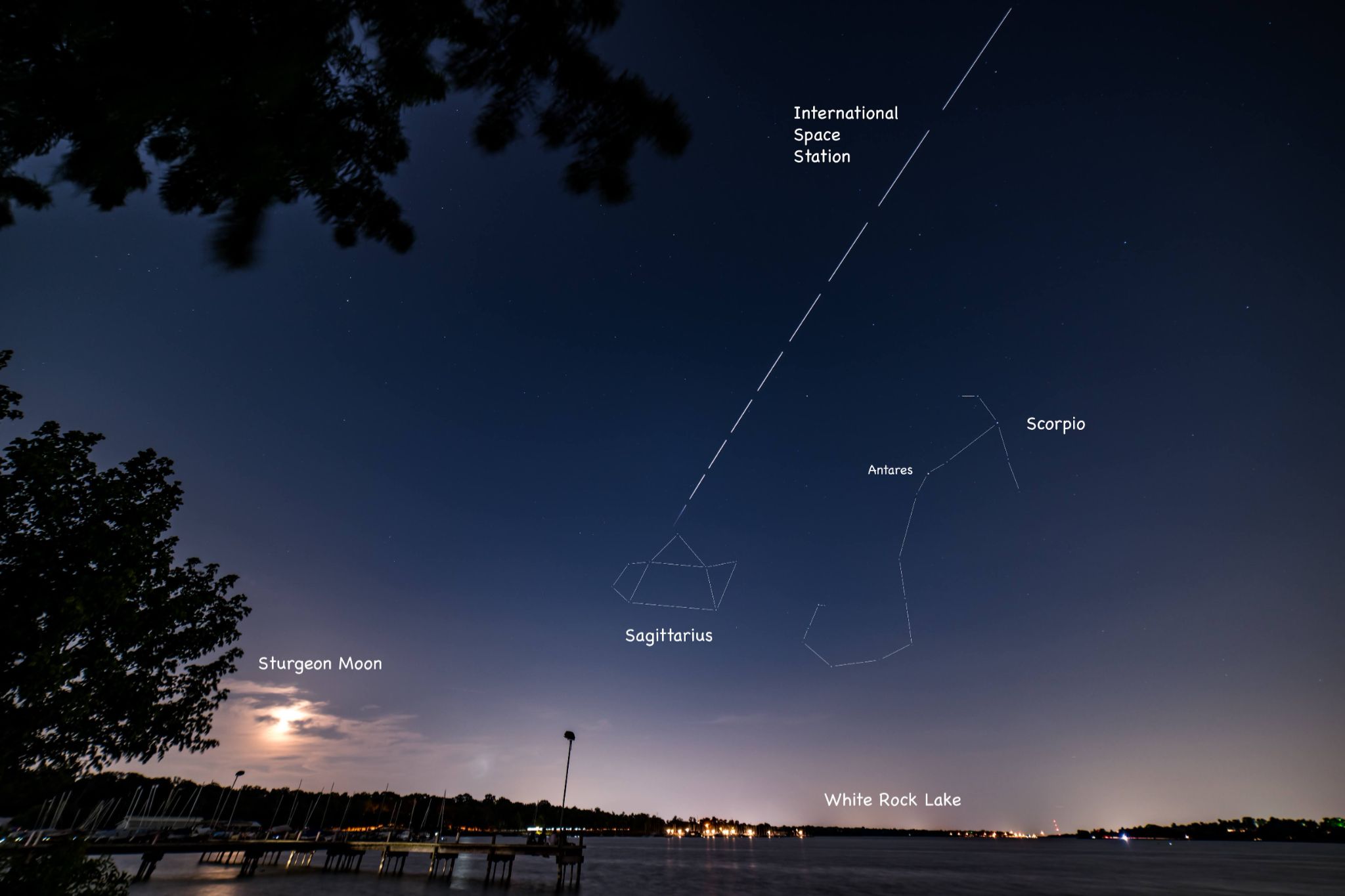EarthSky Community Photos
Submit your photo here. Comment or upvote on photo pages. Search via photographers' names. More improvements coming! To help, please donate.

White Rock Lake, Dallas, Texas
09:41 pm
Nikon D750, Rokinon 14mm f/2.4 lens, Peak Design Travel Tripod
Sequence of 9 images, 8 second exposure, 10 second interval
Images adjusted for exposure, contrast, white balance, noise in Lightroom Classic then stacked as layers in Photoshop. The base image is the top layer with the uppermost ISS trail. The other ISS trails were blended in using a layer mask on each of the other layers. Labels and constellation lines were then added.
Last month, my granddaughter Harper and I went out to capture an image of the International Space Station (ISS) flying over Dallas. Unfortunately, we were only partially successful, foiled by clouds. This past Tuesday evening, granddaughter Olivia and I headed up to the north shore of White Rock Lake to try again. In spite of being a little late getting to the lake and rushing to set up cameras, we managed to catch the last 90 seconds or so of the ISS flyover as it traveled from the northwest, overhead and down to the southeast. This is the result.
What Olivia and I saw was an incredibly bright "star" moving across the sky, too steady and too fast to be an airplane. It appears as a streak in this image due to the long exposure of each original image; the gaps are due to the delay between each shot while the camera saved the image files.
This photo demonstrates an interesting aspect of ISS flyovers. We can see the ISS fly by only at certain times and places, its visibility due to the viewer being in a position to see sunlight reflected off of the ISS. For this flyover, as it was traveling "away" from the sun (which had set just over an hour earlier) its orbit carried it into the Earth's shadow. Notice how the lowest trail fades off and disappears.
Another interesting object in the sky that night was the Sturgeon Moon, the first of two "supermoons" this month. It was cloaked in clouds until just as we were getting in the car to head home so it just appears in this image as a bright glow to the lower left. Note all the people on the dock though; there was quite a crowd out that night with people all up and down the shoreline to watch the full moon rising. I wonder how many of them also realized they were getting a chance to see the ISS, too?
Thanks to the long exposures taken, the composite includes more than just the ISS and the Moon. Stars of the constellation Sagittarius (the Archer) and Scorpio (the Scorpion) are visible including Antares, the red supergiant that is known as the Heart of the Scorpion.








